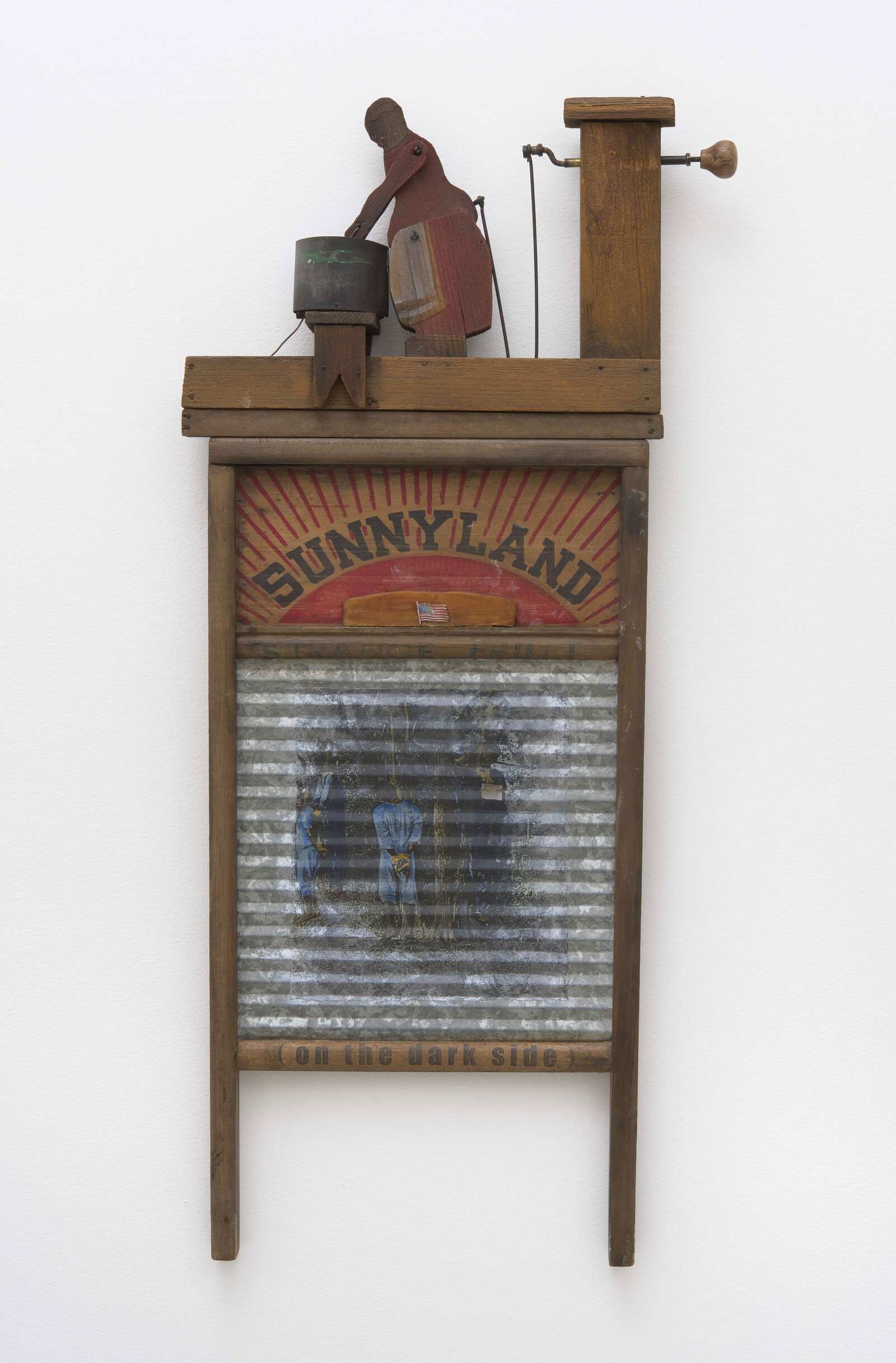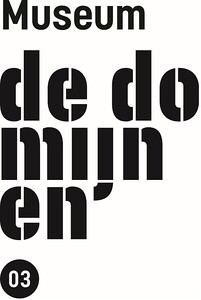Still Tickin'
June 28–November 15, 2015
Kapittelstraat 6
6131 ER Sittard
The Netherlands
Hours: Tuesday–Sunday 11am–5pm
T +31 46 451 3460
museum@dedomijnen.nl
“It is my goal as an artist to create works that [both] expose injustice and reveal beauty.”
–Betye Saar, 2006
American artist Betye Saar (Los Angeles, 1926) is one of the most important artists of her generation. As one of the artists who ushered in the development of Assemblage art, Saar’s practice since the 1960s reflects on African-American identity, spirituality and the connectedness between different cultures. Drawing from influences ranging from artists such as Joseph Cornell paired with her own physical and emotional experiences, Saar pioneered an art form alongside her male colleagues and kindred spirits including David Hammons, John Outterbridge and George Herms.
Her first European institutional solo exhibition, Still Tickin’ brings together work covering six decades examining three central themes: nostalgia and memory; mysticism and ritual; the political and racial. In surveying both historical and contemporary work alike, including multimedia collages, assemblages, sculpture, works on paper, and installations specifically re-conceived for Museum De Domijnen, the museum is committed to continuing the discourse of Saar’s unwavering charge to create works of strong social and political content.
Saar initially began as a graphic artist and costume designer while raising three daughters, two of whom—Alison and Lezley—are now successful artists in their own right. The construction of Simon Rodia’s Watts Towers in Los Angeles marked a decisive moment in Saar’s development as an artist; built over a period of 33 years, from 1921 to 1954, Watts Towers introduced ideas of how found materials embody both the spiritual and technological. This objective, paired with her personal interest in metaphysics, magic and the occult, formed the origin of Saar’s prints and assemblage works. She began to create heavily narrative-based work based on vintage family portraits, interweaving European-oriented concepts of palmistry, phrenology and astrology with non-Western traditions such as voodoo and shamanism.
The emotionally charged 1968 assassination of Martin Luther King Jr. introduced the social and political themes that have come to dominate Saar’s work today. In the 1970s, she began to collect “black collectibles,” i.e. derogatory black imagery which included code-rich characters such as Aunt Jemima, as a way to engage, empower, and visually respond to the legacy of America’s slavery past, the segregation of Jim Crow laws, and the duality of both the African American Civil Rights movement and the feminist movement. The incorporation of racially-charged reference materials simultaneously paid tribute to her multi-faceted heritage while forming the dialogue around her political, racial, religious, and gender concerns within her aesthetic practice.
Saar’s symbolically rich body of work was born from necessity; her practice has evolved over time to succinctly reflect the environmental, cultural, technological, social, economic, and historical context in which it exists. Subsequent series after her now-iconic assemblage, The Liberation of Aunt Jemima (1972), have addressed marginalized histories, including but not limited to the social negation of black Americans in service-oriented jobs, the construction of racial hierarchies within black communities, and how objects retain the memories and histories of their owners. She continues to contest the discursive, racial narrative still prevalent today, with her most recent work as a response to the August 2014 fatal police shooting of Michael Brown in Ferguson, Missouri.
In early 2015, the Sittard-Geleen municipality acquired for its collection Saar’s Sunnyland (On the Dark Side), 1998, with support from the Mondriaan Fund. A monumental work, Sunnyland (On the Dark Side) explores the Aunt Jemima character utilized as the principal logo of an American pancake brand since 1889. Saar had earlier reflected on this character’s familiarity starting in the early 1970s. Sunnyland (On the Dark Side) is the first inclusion of her work in a major European institutional collection, cementing the museum’s commitment to acquiring works of such importance.
The exhibition takes its title from a sculpture eulogizing Saar’s former husband, Richard W. Saar. Colloquially used as “…my heart is still beating,” Still Tickin’ reminds us that, on the eve of her ninetieth birthday in 2016, Saar is in no danger of slowing down.
Betye Saar: Still Tickin’ is curated by Roel Arkesteijn, curator of contemporary art at Museum De Domijnen (formerly known as Museum Het Domein) in Sittard, the Netherlands, in partnership with the Scottsdale Museum of Contemporary Art. A publication is printed in conjunction with the exhibition. From 30 January through 1 May 2016, a slightly modified version of this exhibition will be on view at the Scottsdale Museum of Contemporary Art, Scottsdale, Arizona. With special thanks to Roberts & Tilton, Culver City, California.
For additional information, please contact:
Tessa Reijnders, press officer: tessa.reijnders [at] dedomijnen.nl / T +31 464205680
Roel Arkesteijn, exhibition curator: roel.arkesteijn [at] hetdomein.nl / T +31 464513460
*Betye Saar, Sunnyland (On the Dark Side), 2008. Mixed media on vintage washboard, 85 x 40.5 x 6.5 cm. Courtesy the artist and Roberts & Tilton, Culver City, California. Collection municipality Sittard-Geleen, in long-term loan to Museum De Domijnen, acquired in 2015 with support from the Mondriaan Fund. Photo: Robert Wedemeyer.


